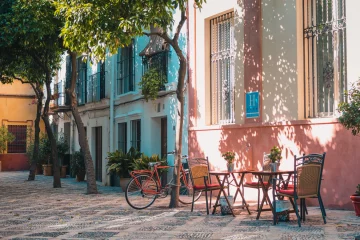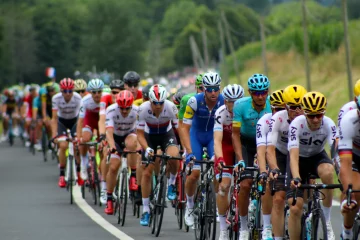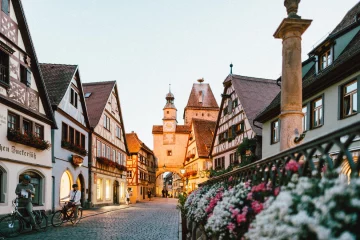Table of Contents
Spain, a spectacular and diverse country
Spain is more than bullfights, flamenco dancers and crowded beaches. It’s a spectacular and diverse country, the north resembling the rolling, green hills of Ireland and the south giving you a taste of Moroccan landscapes and architecture. Its tremendous history is reflected in its prehistoric cave paintings, Moorish palaces, crumbling castles, Roman ruins, Gothic and Renaissance cathedrals as well as some very distinctive modern architecture.
The uniqueness of Spain lies in the separate kingdoms which made up the original Spanish nation. These regions remain diverse in their language, culture, cuisine and art. They include: Andalucía, Aragon, Asturias, Basque Country, the Balearic Islands, the Canary Islands, Cantabria, Castilla La Mancha, Castilla León, Catalonia, Extremadura, Galicia, La Rioja, Madrid, Murcia, Navarra and Valencia.
Spain Beaches
Excellent and quiet beaches can be found near Malaga, Huelva and Almería in the south as well as near the coasts of La Manga, Galicia, Asturias, Cantabria and Euskadi. If you do enjoy extremely developed resort towns, there are plenty of crowded beaches on the Costa de la Luz and the Costa del Sol. Interesting is the harbor of Almerimar with cozy bars, just south of El Ejido (Almeria).
The ideal months to visit Spain are between May and September (plus April and October in the south). At these times you can rely on good weather, yet avoid the sometimes extreme heat – and the main crush of Spanish and foreign tourists.
In many parts of Spain, the high season begins during Holy Week (Semana Santa) and includes festival days. If you want to make sure you hit some parties, the best festivals are concentrated between Holy Week and September.
Summer is the high season for coastal and interior regions in Spain. Tourism on the Iberian Peninsula reaches its height in August; the coastal regions overflow while inland cities empty out, leaving closed offices, restaurants, and lodgings. The Peninsula plays host to some thirty million tourists a year – almost one for every resident – and all the main beach and mountain resorts are packed in July and August, as are the major sights. So, as a general rule, always make reservations if you plan to travel in those months.
Getting Spain
Spain is dotted with international airports and its connections with the rest of Europe are excellent. Most of this country is well covered by both bus and rail networks. On the other hand, if your trip to Spain is part of a wider European tour, then it may be worth investing in a rail pass, such as the InterRail ticket.
Buses tend to be quicker than trains and will also normally take you closer to your destination. The majority of train stations are several kilometers from the city they serve and you’ve no guarantee of a connecting bus.
Eating in Spain
Eating in Spain is often cheap and meals are substantial rather than gourmet. One of the best ways to sample Spanish food is to try tapas, or snacks, which are served at any time of day in local bars.
In Spain food ranges from cheese and olives to squid or meat delicacies and are priced accordingly. Many of the specialities of Spanish cuisine are based on seafood, although regional specialities are easier to find inland than along the coast. In the northern Basque provinces, there is cod vizcaina or cod pil-pil; angulas, the tasty baby eels from Aguinaga; bream and squid. Asturias has its bean soup, fabada, cheeses and the best cider in Spain, and in Galicia there are shellfish, especially good in casseroles, and a number of regional seafood dishes such as hake à la Gallega. There are a wide range of Spanish recipes where you can choose.
For food in Spain in the eastern regions the paella has a well-deserved reputation. It can be prepared in many ways, based on meat or seafood. Catalonia offers, among its outstanding specialities, lobster Catalan, butifarra sausage stewed with beans, and partridge with cabbage. Pan amb tomaquet, bread rubbed with olive oil and tomato, is a delicious accompaniment to local ham and cheese.
Festivities of spain
The festivals and celebrations in Spain are full of life. Although Spain is widely known for Flamenco and bullfights, this country has several festivals and celebrations and most towns have their own in addition to the national ones. The majority of festivals in Spain are religious in origin, but, these days, this religious component of every celebration is usually secondary.
Bullfighting in Spain
Along with eating tapas and watching flamenco, watching a bullfight is one of the activities that you can’t miss in Spain and a must for a tourist. This is the most traditional of Spanish Fiestas. The Spanish people consider them art forms which are intimately linked with their country’s history, art and culture. Although it is very controversial, bullfighting is Spain’s oldest and best loved national sport.
Bull fighting is very closely associated with Spain and can trace its origins back to 711 A.D when the first bullfight took place in celebrations of King Alfonso VIII. The origins of the Bullring or “plaza de toros” are probably not the Roman amphitheaters but rather the Celtic-Iberian temples where those ceremonies were held.



0 comentarios